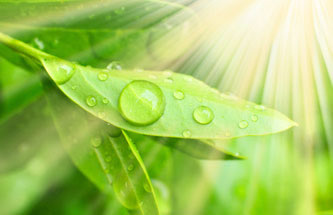
Although Matcha Green Tea has been around for well over 800 years, it is only now beginning to be recognized within the health community as a superfood that surpasses virtually every other anti-oxidant superfood today. Matcha's roots go back to ancient China when it was used medicinally. However, as Matcha came to the mainland of Japan over 800 years ago, it grew into a traditional ceremonial beverage loved and revered by the Japanese.
Gradually an awareness is dawning, but it has been slow coming, after all - how good can drinking green tea really be? But Matcha is no "ordinary" green tea. It is the "Ceremonial" tea of the ancients.
Matcha's Superfood Qualities…
Matcha is the most effective way to experience the amazing health benefits of green tea. It is a beverage for both the mind and the body. Matcha delights the senses, purifies the body and lifts the spirit.
Matcha tea is approximately 10X stronger than regular brewed green tea. The anti-oxidant activity of Matcha is higher than that of blueberries, 100 times more potent than Vitamin C, and 25 times more active than Vitamin E. Matcha contains over 70 times the anti-oxidants of fresh orange juice, and over 9 times the beta carotene of spinach. Matcha also contains a good helping of fiber, as well as all the essential vitamins and minerals for optimal health.
Matcha also contains high amounts of L-Theanines—a unique set of natural amino acids found almost exclusively in shade grown green tea such as Matcha and is known to reduce stress and anxiety. The unique property of L-theanines, provides the body for sustained energy of 3 to 6 hours without any caffeine crash.
This unique combination, which almost exclusively exists in Matcha, also heightens the concentration to help provide increased mental clarity and focus. With virtually zero calories, this makes Matcha the ultimate "energy drink"—without any of the side effects found in the highly sugared, over-caffeinated beverages sold in stores today. Matcha is extremely rich in 3 very important nutrients that are of high interest for healthier lifestyle living: Insoluble Fibers, Antioxidants, and L-Theanines.
Matcha's Antioxidant Properties…
Worldwide research points to green tea's antioxidant polyphenols for its potent beneficial properties. Epigallo-catechin gallate (EGCG: also an antibiotic) is the most prominent of these. Together with tannins and flavonoids they are collectively called 'catechins' and account for about 40% of its dry weight. Researchers at the U niversity of Kansas found antioxidant levels of matcha green tea 100 times more effective than vitamin C and 25 times better than vitamin E.
Green tea contains more beneficial astringent tannins than other tea. These are preserved through the steaming of the leaves and keeping them green. Researchers tell us the caffeine activates the tannins, while the tannins counter balance the caffeine. Recently they discovered that L-theanine, a nonessential, non-protein amino acid naturally present in the green tea bush (Camellia Sinensis:" and the main compound responsible for the unique flavor of green tea, enhances learning ability, induces relaxation and inhibits caffeine stimulation.
Our organic matcha is harvested in early June to mid July, when the tea leaves are most tender. The stems, twigs and veins are removed from the leaves. Then cutting, winnowing, and drying prepares them for one of the thousand small granite stone mills. It takes about one hour per mill set to make thirty (30) grams of our organic matcha!
Unlike brewed teas that are steeped and discarded, Matcha is the whole leaf. The whole leaf is consumed being whisked into warm water. It is literally a green tea concentrate.
